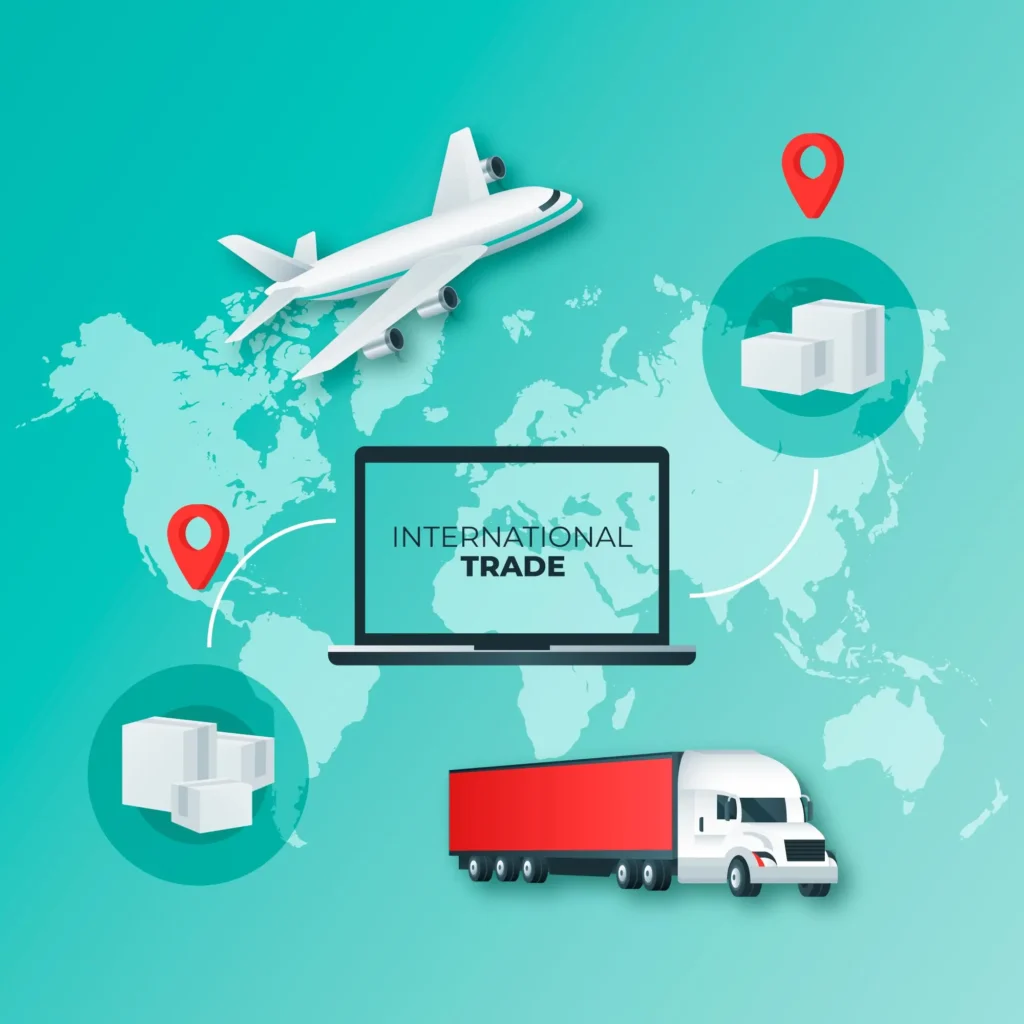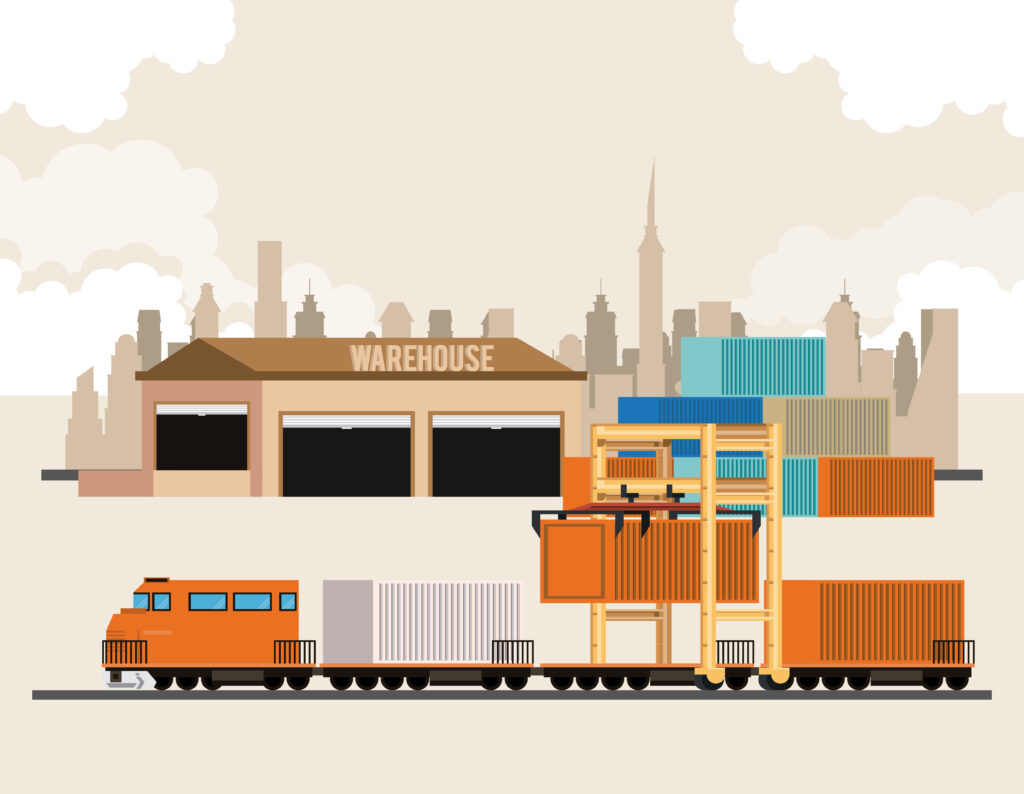MULTIMODAL SERVICES
Best Multimodal Transport Services Company in Dubai UAE
Introduction: We (SLR Shipping) have comprehensive multimodal transportation services solutions connecting you to key destinations in the entire region of CIS / AFGHANISTAN / MONGOLIA.
– Truck and Rail Services: Seamlessly transport your goods to inland cities across Azerbaijan, Armenia, Georgia, Turkmenistan, Uzbekistan, Tajikistan, Kyrgyzstan, and Kazakhstan. Benefit from our efficient truck and rail network for reliable deliveries.
– Door-to-door Service to Iraq & Afghanistan: We offer hassle-free door-to-door service to inland cities in Iraq and Afghanistan – Islamqala, Herat, Kabul, Mazhar-e Sharif, and Nimruz ensuring your cargo reaches its destination securely and on time.
– Strategic Ports and Caspian Sea Routes: Utilize our strategic partnerships and expertise to access destinations through Riga Port and Poti Port. Additionally, leverage our efficient Caspian Sea routes to Aktau, Astrakhan, and inland destinations across CIS countries.
Trust SLR Shipping for seamless logistics solutions tailored to your needs, ensuring efficient and timely deliveries across the region. We are Here to Hear through our website Live Chat System.
What is Multimodal Transport Services?
Multimodal Transport Services refer to the movement of goods under a single contract but performed with at least two different means of transport. This integrated approach combines various modes such as rail, road, sea, and air transportation to efficiently move goods from the origin to the destination. The essence of multimodal transport lies in its ability to leverage the strengths of different transportation methods to optimize cost, speed, and reliability.
At the heart of multimodal transport services is a “Multimodal Transport Operator” (MTO), who acts as the principal contractor. The MTO takes responsibility for the entire transport chain, ensuring a seamless transition between modes and handling all logistical requirements, including customs clearance and storage. This arrangement simplifies the shipping process for the shipper, as they deal with a single entity for the entire journey of the cargo, despite it being handled by multiple carriers.
Multimodal transport services are particularly advantageous for international trade, where goods often need to traverse great distances and cross borders. It offers a balance between the fast transit times of air freight and the cost-effectiveness of sea freight, adding the flexibility of road and rail transport to reach inland destinations. This method reduces cargo handling, improves security, shortens delivery times, and can lower overall transport costs.
Furthermore, multimodal transport services are increasingly considered a sustainable alternative to traditional single-mode transport. By optimizing route and mode combinations, they can reduce the environmental impact of freight transport, contributing to greener supply chains.
In essence, multimodal transport services represent a sophisticated, efficient, and flexible solution in the logistics and transportation industry, catering to the complex needs of global trade and supply chain management.

Types of Multimodal Transport Services
Multimodal transport encompasses various combinations of transportation modes to move goods from origin to destination efficiently. Each type leverages the strengths of specific transportation methods to suit different needs in terms of speed, cost, volume, and geographic accessibility. Here are some common types of multimodal transport:
- Road-Rail Multimodal Transport Services: This combination uses trucks for the initial and final legs of the journey, with rail transport covering the long-haul middle section. Rail is cost-effective and environmentally friendly for long distances, while road transport provides flexibility and access to remote areas.
- Road-Sea Multimodal Transport Services: Goods are transported by truck to a seaport, then shipped by sea to another port, and finally delivered by road to the destination. This type is common in international trade, balancing sea transport’s cost-effectiveness with road transport’s extensive reach.
- Rail-Air Multimodal Transport Services: This type combines the rapid transit times of air freight with the cost-efficiency of rail for ground segments. It’s suitable for high-value, time-sensitive goods that require quick delivery over long distances.
- Road-Air Multimodal Transport Services: Integrating road and air transport, this type is used for urgent shipments. Goods are quickly moved to an airport, flown to the nearest airport to the destination, and then delivered by road.
- Rail-Sea Multimodal Transport Services: This method combines sea transport’s large volume capacity and long-distance efficiency with rail’s speed and reliability on land. It’s often used for bulk shipments and heavy goods.
- Inland Waterway-Road/Rail/Sea Transport Services: Inland waterways, like rivers and canals, can be part of a multimodal route, especially in regions where such waterways are efficient and accessible. This type is eco-friendly and suitable for heavy and oversized cargo.
- Intermodal Container Transport Services: Although not a mode combination per se, it’s crucial in multimodal transport. Standardized shipping containers are used across different modes without unloading goods, enhancing security and reducing handling costs.
Each type of multimodal transport service is designed to exploit the comparative advantages of the involved modes, optimizing the balance between cost, speed, and environmental impact, depending on the cargo’s nature and the journey’s specific requirements.

Advantages and Disadvantages of Multimodal Transport Services
Multimodal Transportation Advantages
Multimodal transportation, with its integration of various transport modes into a single supply chain solution, offers numerous advantages:
- Cost Efficiency: By combining different modes of transport, multimodal transportation can significantly reduce costs. Each mode can be selected based on the most cost-effective option for each leg of the journey, taking advantage of the economies of scale and the inherent cost benefits of modes like rail and sea freight over longer distances.
- Flexibility and Reach: Multimodal transportation extends the reach of goods to remote and inland areas that might not be directly accessible by sea or air. This flexibility ensures that businesses can deliver goods to a wider range of destinations, meeting the demands of a globalized market.
- Reduced Handling: Using standardized containers in multimodal transport minimizes the need for handling the cargo at each transfer point, reducing the risk of damage or loss and improving security. This streamlined process can also lead to faster transit times.
- Environmental Benefits: By optimizing the use of more environmentally friendly modes of transport, like rail or sea, over longer distances, multimodal transportation can significantly reduce carbon emissions compared to relying solely on road freight.
- Enhanced Efficiency: The coordination between different transport modes often leads to more efficient supply chain management. Advanced logistics and transportation management systems enable the smooth transition of goods between modes, minimizing delays and improving overall transit times.
- Simplified Logistics: Dealing with a single multimodal transport service operator simplifies the logistics process for shippers. It eliminates the need to negotiate contracts and manage relationships with multiple carriers, reducing administrative burdens and potential communication issues.
- Increased Reliability: The diversified approach of using multiple transportation modes can increase the reliability of the supply chain. Alternatives are readily available if one mode encounters delays or disruptions, ensuring that the impact on delivery times is minimized.
- Scalability: Multimodal transport services offer scalability to businesses, accommodating varying volumes of goods. Companies can easily adjust their logistics strategies based on current needs without being tied to the limitations of a single mode of transport.
- Improved Safety: The reduced need for handling and the use of secure containers enhance the safety of goods in transit. This is particularly important for sensitive or high-value cargo.
In summary, multimodal transportation provides a blend of benefits that can lead to more efficient, cost-effective, and sustainable logistics operations, making it a preferred choice for businesses looking to optimize their supply chains in the face of global trade complexities.
Multimodal Transportation Disadvantages
While multimodal transportation offers numerous advantages, it also comes with certain disadvantages and challenges:
- Complexity and Coordination: Coordinating between different transport modes, carriers, and logistics providers can be complex and challenging. Managing the transfer of goods between modes requires careful planning and communication to ensure seamless transitions, which can increase the risk of delays or errors.
- Higher Initial Investment: Implementing a multimodal transportation system often requires a significant initial investment in infrastructure, equipment, and technology. This can be a barrier for smaller businesses or companies operating in regions with limited transportation infrastructure.
- Regulatory and Legal Considerations: Multimodal transportation involves navigating a complex regulatory environment, including international trade regulations, customs procedures, and liability issues. Ensuring compliance with various legal requirements adds complexity and potential costs to the transportation process.
- Dependence on Multiple Partners: Multimodal transportation relies on the cooperation and reliability of multiple partners, including carriers, freight forwarders, and logistics providers. Any breakdown in communication or performance from one partner can disrupt the entire supply chain, leading to delays and increased costs.
- Risk of Damage or Loss: Despite efforts to minimize handling and secure cargo in standardized containers, there is still a risk of damage or loss during transfers between different transport modes. This risk increases with each transfer point, especially for fragile or perishable goods.
- Limited Control and Visibility: With multiple parties involved in the transportation process, shippers may have limited control and visibility over their cargo’s whereabouts and condition. A lack of real-time tracking and monitoring capabilities can make it challenging to address issues or make timely adjustments to the supply chain.
- Incompatibility of Infrastructure: Infrastructure differences between different transport modes, such as varying track gauges or port facilities, can create compatibility issues and logistical challenges. Adapting to these differences may require additional handling or processing, adding complexity and cost to the transportation process.
- Potential for Congestion and Delays: Multimodal transportation hubs, such as ports and intermodal terminals, are susceptible to congestion and delays, especially during peak periods or adverse weather conditions. These disruptions can impact the overall efficiency and reliability of the supply chain.
- Environmental Concerns: While multimodal transportation can reduce carbon emissions compared to single-mode transport, it still contributes to environmental pollution and resource consumption. The reliance on fossil fuels for certain modes, such as road transport, can negate some of the sustainability benefits.
Despite these disadvantages, many businesses still find that the advantages of multimodal transportation outweigh the challenges, particularly for long-distance or international shipments where the benefits of cost savings, efficiency, and flexibility are most pronounced. However, addressing and mitigating these disadvantages requires careful planning, investment, and collaboration across the supply chain.
Challenges of Multimodal Transport Services
Multimodal transport, while offering various benefits, presents several challenges that can impact its effectiveness and efficiency:
- Infrastructure Compatibility: Infrastructure differences between transport modes, such as varying track gauges or port facilities, can pose compatibility challenges. Adapting cargo for different modes or handling transfers between incompatible infrastructure can increase costs and transit times.
- Regulatory Compliance: Multimodal transport involves navigating a complex regulatory landscape, including international trade regulations, customs procedures, and transport-specific regulations. Ensuring compliance with diverse regulatory requirements adds complexity and administrative burden to the transportation process.
- Risk Management: The involvement of multiple parties and transfer points increases the risk of damage, loss, or theft of cargo. Effective risk management strategies, including insurance coverage and security measures, are essential to mitigate these risks and protect cargo throughout the transportation chain.
- Information Technology Integration: Integrating information technology systems across different transport modes and stakeholders is crucial for seamless coordination and visibility. However, achieving interoperability between disparate systems and ensuring data accuracy and security can be challenging.
- Supply Chain Visibility: Limited visibility into the entire supply chain, including real-time tracking and monitoring of cargo, can hinder proactive decision-making and responsiveness to disruptions. Enhancing supply chain visibility requires investment in technology and collaboration among stakeholders.
- Environmental Sustainability: While multimodal transport services can offer environmental benefits compared to single-mode transport, they still contribute to carbon emissions and environmental pollution. Addressing environmental sustainability challenges requires adopting greener transport modes, improving fuel efficiency, and reducing emissions throughout the supply chain.
- Infrastructure Capacity and Congestion: Multimodal transport hubs, such as ports, terminals, and intermodal facilities, face capacity constraints and congestion during peak periods. Investing in infrastructure upgrades and optimizing capacity utilization are necessary to alleviate congestion and improve efficiency.
- Skills and Training: Multimodal transport services require skilled personnel with expertise in managing complex logistics operations and navigating diverse transport modes and regulations. Investing in training and development programs is essential to build a capable workforce and ensure operational excellence.
- Cost Management: Managing costs across multiple transport modes and service providers is challenging. Balancing cost considerations with service quality, reliability, and efficiency requires careful planning, negotiation, and performance monitoring.
Addressing these challenges requires collaboration among stakeholders, investment in technology and infrastructure, and continuous improvement in processes and practices. Despite the complexities involved, overcoming these challenges can unlock the full potential of multimodal transport to enhance supply chain resilience, efficiency, and sustainability.

Frequently Asked Questions (FAQs) for SLR Shipping Multimodal Transport Services
1. What services does SLR Shipping offer?
SLR Shipping offers a wide range of transportation services, including truck and rail services to inland cities, door-to-door service to Iraq, specialized service to Afghanistan, and routes via strategic ports and the Caspian Sea.
2. What countries does SLR Shipping serve?
SLR Shipping serves various countries in the region, including Azerbaijan, Armenia, Georgia, Turkmenistan, Uzbekistan, Tajikistan, Kyrgyzstan, Kazakhstan, Iraq, Afghanistan, and CIS countries.
3. How does SLR Shipping ensure timely deliveries?
SLR Shipping ensures timely deliveries through efficient truck and rail networks, dedicated door-to-door service, and strategic partnerships with ports and sea routes. Our experienced team ensures smooth operations and timely execution of deliveries.
4. What are the benefits of using SLR Shipping’s services?
Using SLR Shipping’s services offers numerous benefits, including reliable transportation, hassle-free logistics solutions, access to strategic ports and sea routes, and dedicated customer support. We prioritize customer satisfaction and strive to exceed expectations.
5. How can I track my shipment with SLR Shipping?
Tracking your shipment with SLR Shipping is easy. Simply use our online tracking system or contact our customer support team for real-time updates on the status of your cargo.
6. Does SLR Shipping offer customs clearance services?
Yes, SLR Shipping offers customs clearance services to ensure the smooth transit of your cargo across borders. Our experienced team handles all customs formalities efficiently, minimizing delays and ensuring compliance with regulations.
7. What types of cargo does SLR Shipping transport?
SLR Shipping transports various types of cargo, including general goods, perishable items, oversized cargo, hazardous materials, and more. Our flexible logistics solutions cater to diverse cargo requirements.
8. How can I request a quote for shipping with SLR Shipping?
Requesting a quote for shipping with SLR Shipping is easy. Simply fill out our online quote request form or contact our sales team directly. We’ll provide you with competitive pricing tailored to your specific shipping needs.
9. Is SLR Shipping environmentally friendly?
Yes, SLR Shipping is committed to environmental sustainability. We prioritize eco-friendly practices, such as optimizing routes to reduce carbon emissions, utilizing fuel-efficient vehicles, and adhering to environmental regulations.
10. How can I contact SLR Shipping for further inquiries?
For further inquiries or assistance, you can contact SLR Shipping through our website’s Live Chat System, or by phone. Our dedicated customer support team is available to address any questions or concerns you may have.

